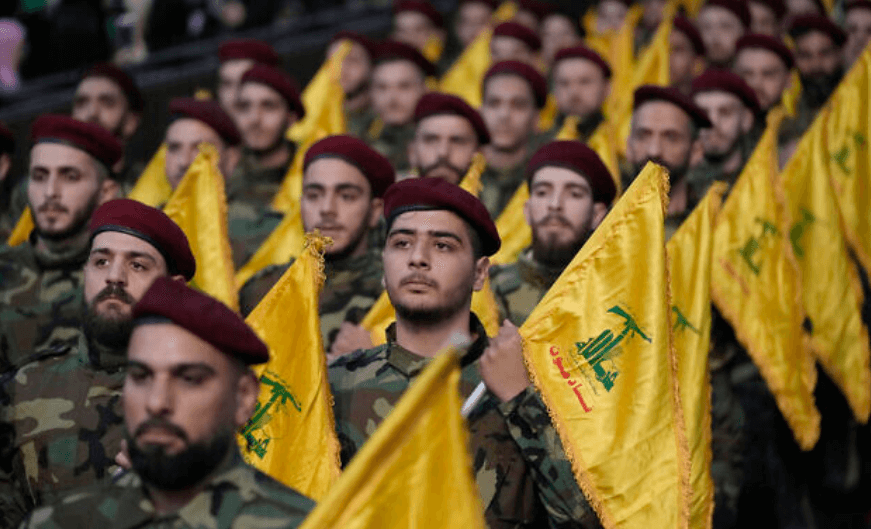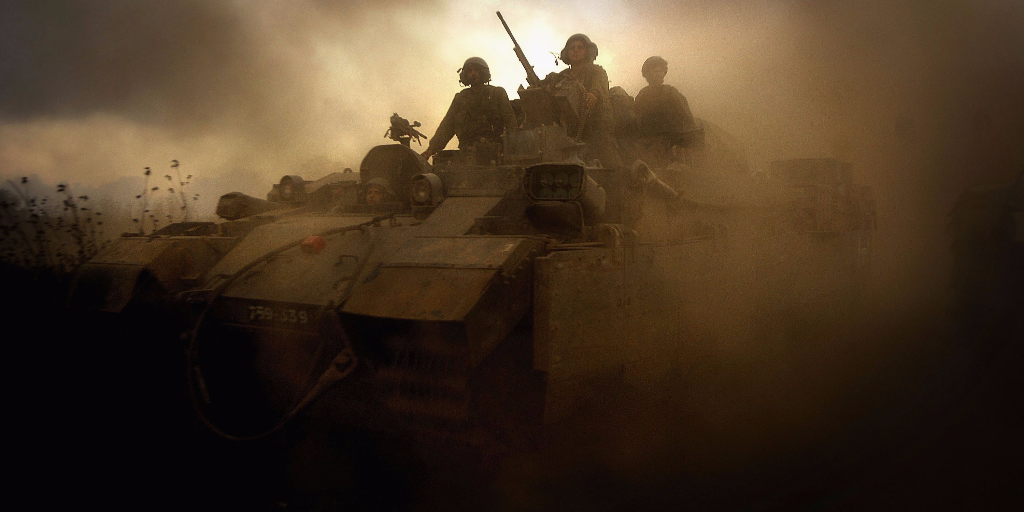
The Coming War Between Israel and Hezbollah
The group’s reputation depends on resisting Israeli demands to vacate southern Lebanon.
Ever since the inconclusive 2006 Israel-Hezbollah war, a rematch – and clear Israeli victory – has seemed inevitable. That conflict is now at hand. Storm clouds were gathering even before Hamas’ Oct. 7 attack, when Israel began building a wall around the Lebanese part of Ghajar village to prevent Lebanese from entering it. Israel had seized Ghajar from Syria during the Six Day War in 1967 and then extended its holdings during its occupation of southern Lebanon from 1982 to 2000. Hezbollah responded to Israel’s wall construction by setting up two tents in Israeli-held Shebaa Farms, another contested area that Israel occupied during the 1967 war. It assumed that Israel lacked the will to go to war, given Prime Minister Benjamin Netanyahu’s government’s preoccupation with domestic crises.
After the eruption of the current Israel-Hamas war, Hezbollah initiated low-intensity attacks in southern Lebanon to support Gaza. Hezbollah concluded that a token display of solidarity with Hamas would not lead to a full-scale war. Hezbollah chief Hasan Nasrallah said Israel had intended to eliminate the Islamic resistance in Lebanon, but because of his actions it lost the initiative and canceled its plans. Those statements were reminiscent of his justification for raiding northern Israel in 2006. When those raids sparked a war, Nasrallah said Israel had planned to invade Lebanon anyway. Since that conflict, Hezbollah has often claimed to have established a deterrent military capability vis-à-vis Israel. Many Lebanese, especially Shiites, took these claims at face value. In response to the escalating skirmishes on the border with Lebanon, Israeli Defense Minister Yoav Gallant said that if Nasrallah made the same mistake as Hamas leader Yahya Sinwar, it would have disastrous consequences for Lebanon. Gallant and other senior Israeli officials demanded that Hezbollah quit the border area to avert war. But Hezbollah cannot just pack up and leave the area because doing so would shatter its reputation as a resistance movement. Israeli officials soon began to warn that time for diplomacy was running out.
In response to the escalating skirmishes on the border with Lebanon, Israeli Defense Minister Yoav Gallant said that if Nasrallah made the same mistake as Hamas leader Yahya Sinwar, it would have disastrous consequences for Lebanon. Gallant and other senior Israeli officials demanded that Hezbollah quit the border area to avert war. But Hezbollah cannot just pack up and leave the area because doing so would shatter its reputation as a resistance movement. Israeli officials soon began to warn that time for diplomacy was running out.
Hezbollah’s Frame of Mind The Israel-Hamas war created a serious dilemma for Hezbollah. If it distanced itself from Hamas, Arab and Islamic public opinion would blame it. If it rushed into confrontation, it would give the Israeli government the war it wants. When it decided to show solidarity with Hamas, Hezbollah refrained from launching barrages of its most capable missiles, relying instead primarily on anti-armor rounds. However, behind Nasrallah’s warning that Israel would regret it if it attacked Lebanon, Hezbollah’s half-hearted retaliation to Israel’s lethal firepower betrayed its reluctance for all-out war.
The Israel-Hamas war created a serious dilemma for Hezbollah. If it distanced itself from Hamas, Arab and Islamic public opinion would blame it. If it rushed into confrontation, it would give the Israeli government the war it wants. When it decided to show solidarity with Hamas, Hezbollah refrained from launching barrages of its most capable missiles, relying instead primarily on anti-armor rounds. However, behind Nasrallah’s warning that Israel would regret it if it attacked Lebanon, Hezbollah’s half-hearted retaliation to Israel’s lethal firepower betrayed its reluctance for all-out war.
Undeterred, Israel launched a drone strike last week that killed the deputy head of Hamas’ Political Bureau, Saleh Arouri, in a Beirut suburb and Hezbollah stronghold. It was the harshest blow to Hezbollah since the targeted killing of its secretary-general, Abbas al-Musawi, in an airstrike in southern Lebanon in 1992. (It was worse even than the 2008 assassination of Imad Mughniyeh, Hezbollah’s chief of staff, because it took place in Hezbollah’s de facto capital, whereas Mughniyeh was killed in Damascus.) Last year, Nasrallah pledged to protect Hamas and Islamic Jihad leaders residing in Lebanon, namely Arouri, whom the Israeli press described as the head of the snake who sought to lead the West Bank into a third intifada. Nasrallah called the attack intolerable and said Hezbollah intended to answer it on the battlefield. When it did, its barrage of more than 60 rockets fired at an Israeli air base inflicted no human casualties. Five Hezbollah fighters died in Israel’s response.
Hezbollah needs to protect the Palestinian cause to justify its refusal to disband its military wing. Without naming them, Nasrallah routinely denounces countries in the region, including Saudi Arabia, for attempting to sign normalization agreements with Israel. He accuses the countries of abandoning the Palestinian cause in favor of the “Israeli enemy.” But Hezbollah is sustaining heavy casualties in the military exchanges with Israel. In the 2006 war, the group relied on firing missile salvos into the Israeli interior and laying ambushes for advanced Israeli armor. In the current fighting, however, Hezbollah is engaging Israel from fixed positions close to the border. This approach is inconsistent with Hezbollah’s history of asymmetric warfare.
Furthermore, the technological gap between Israel and Hezbollah is wider than ever. Hezbollah often brags about its considerable missile and rocket stockpiles, which, at approximately 200,000, far exceed what most NATO countries possess. But this arsenal is more intimidating in theory than in practice, and Hezbollah knows it. Most of the missiles are stored in secret warehouses. Readying them for launch is risky because it exposes them to Israeli airstrikes, especially because Hezbollah does not possess a credible surface-to-air missile system. After Hezbollah activated the southern Lebanon front in October, Israel evacuated the border towns of their residents and knocked many of Hezbollah’s rockets and missiles south of the Litani River out of service. The group’s attempt to move mobile platforms outside the combat zone exposed them to destruction by the Israeli Air Force.
More than half of Hezbollah’s arsenal consists of inaccurate 122 mm rockets, whose range is between 20 and 40 kilometers (12-25 miles). These can be used in massive barrages to instill fear but have little utility when it comes to destroying targets. Hezbollah’s inventory also includes missiles with heavier warheads and longer ranges, such as the Fajr-5 (range of up to 75 kilometers) and the Khaibar-1 (up to 100 kilometers). It also has the Zelzal-1 and Zelzal-2, which can carry explosive warheads weighing 600 kilograms (1,300 pounds) and have a range of about 210 kilometers, but the Iron Dome missile system can easily intercept and shoot them down. Moreover, the Zelzal missiles require enormous launch vehicles and are slow to reload, making them easy targets. Hezbollah also has Fateh-110 ballistic missiles, with a range exceeding 250 kilometers. These are GPS-guided versions of the Zelzal missile, but they are still highly inaccurate. (They have a circular error probability of 500 meters, meaning half of them can be expected to land outside that radius.) Finally, under direct orders from the Islamic Revolutionary Guard in Syria, Hezbollah transferred several medium- and long-range missiles from Iranian warehouses in Syria to areas on the Syrian-Lebanese border. They include the Dezful 1,000-kilometer missile and the Soumar 2,000-kilometer cruise missile.
Hezbollah will launch some of its missiles from buried launch pads or from mobile platforms and will work to conceal them as civilian trucks. Most of the group’s surface-to-surface projectiles are not precision weapons. When it fired a salvo of 48 Grad rockets last November in response to the Israeli Air Force’s killing of a field commander whose father heads the Hezbollah parliamentary bloc, 20 of them fell inside Lebanese territory. If it does use its small arsenal of fairly accurate missiles, it will be against strategic targets, such as military bases, bridges, power relay stations and ports. Israeli Home Front personnel are trained to deal with a successful missile strike and repair the damage.
Border Demarcation and War Diplomacy
Hezbollah realizes that these purportedly accurate missiles will not deter Israel from going to war to evict it from the border area, and it is readying itself for this eventuality. It also understands that a diplomatic drive led by the U.S. to settle the border issue will accompany war. Any eventual cease-fire will include a clause about resolving the lingering border question. Hezbollah will view it as a victory, ending the need to maintain a military presence deep in southern Lebanon.
In 2000, the Israeli army withdrew to the Blue Line, which was charted by the United Nations. Even though Lebanon accepted the Blue Line, it contested 13 border points. U.S. special envoy Amos Hochstein, who mediated the agreement in 2022 to demarcate the Israel-Lebanon maritime border, said that Lebanese officials had communicated to him during meetings that they also wanted to resolve the disputed land border issue. He stressed that Washington was ready to support this endeavor. The area in question is small – no more than 50 square kilometers. The 13 sections disputed by Lebanon total only about half a square kilometer. However, Israel has yet to express a desire to engage on the issue.
Nasrallah welcomed the Lebanese state’s assuming responsibility for demarcating the land borders, as he did when he accepted the maritime border demarcation agreement, saying that Hezbollah supports any plan approved by the government in Beirut. However, the Hezbollah chief also said that the ongoing clashes on the border with Israel provided Lebanon with a historic opportunity to liberate every inch of its territory. His tone suggested that war was coming, and with it, there would be no need for Hezbollah to maintain a military presence on the border.
The Israeli army’s voluntary withdrawal from southern Lebanon in 2000 could have marked the end of Hezbollah’s role as an anti-Israel force, but Iran kept the group alive as part of its efforts to project regional power. Hezbollah will remain a defining figure in domestic Lebanese politics. But the long game is approaching an end.
Saturday, January 20, 2024
The Coming War Between Israel and Hezbollah
Subscribe to:
Post Comments (Atom)







No comments:
Post a Comment
Note: Only a member of this blog may post a comment.